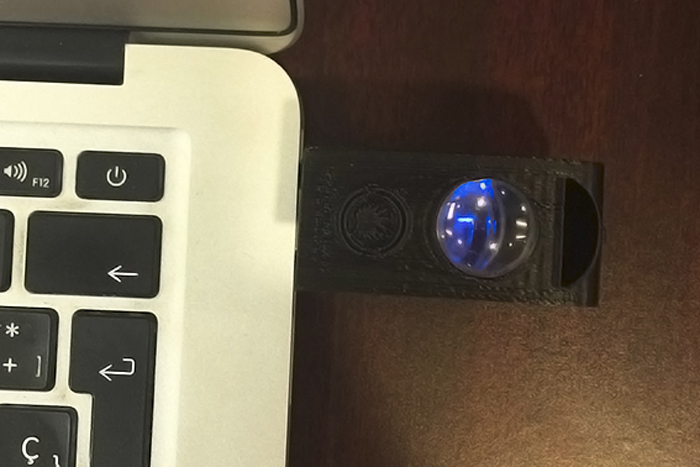Your Internet Data May Soon Be Transmitted Through Light
People thought it was a joke when Harald Haas said that you can access the internet through a light bulb.
But when he presented his case in a TED Talk presentation last 2011, everyone in the audience was dumbfounded when he actually demonstrated it. Using an LED bulb attached to a desk lamp, Haas claimed that the light the audience was seeing transmitted data towards a receiver underneath the light. And to prove it, he asked them to look at the screen behind him. There was a streaming video of blooming flowers. When he put his hand under the light, the video stopped. He removed his hand, the video continued to play. He did this several times and it didn’t fail.
His video on the TED Talk website has reached more than two million views as of writing and he’s earned more than just fans. Forward-thinking businesses have latched onto Haas’ idea and believe it or not, Li-Fi or “light fidelity” is already in our midst.
Just this March 2016, Dubai-based telecom company du has successfully demonstrated the use of Li-Fi . Using LEDs or light-emitting diodes instead of the radio waves used in Wi-Fi technology, data can be transmitted to a device with a corresponding receiver. The du company has reported that 224 GB of data could be transmitted through Li-Fi. This means that a high definition movie could be downloaded in mere seconds.
A similar test was also done in Estonia by tech start-up Velmenni where it recorded a data transmission speed of up to 1GB per second. The tests were done in industries and offices in Talinn and showed that Li-Fi was 100 times faster than Wi-Fi. Though the technology is similar to fibre optics, where data is transmitted by light via optic cables, data transmission through visible light is a first of its kind.
Data connectivity through light
The impressive work behind Li-Fi lies at the understanding of the electromagnetic or EM spectrum. There are generally seven EM regions: gamma ray, x ray, ultraviolet, visible light, infrared, microwave, and radio waves. Each of these regions have frequencies that we humans encounter in our daily lives. All of them are utilized in various gadgets and devices. But in terms of communication, radio waves has had the most utilization especially with the use of Wi-Fi or “wireless fidelity.”
Haas, in his TED Talk video, explains that radio waves have certain problems when transmitting data. Because of high dependency on this frequency region, capacity has been a problem as almost all of its spectrums are already being used. This limited data transmission. Another one is efficiency as much energy is spent to cool down 1.4 million cellular radio bases and masts. Haas also cited security as another issue with radio waves interfering with other communications like what happens in flights. Other people can also hack into other people’s Wi-Fi as it penetrates through the walls.
The alternative, Haas noted, was the use of visible light (thus the term ‘visible light communications’ or VLC). This is where Li-Fi comes in. Using the visible light spectrum to transmit data, Li-Fi responds to the issue of capacity, efficiency, and security. Data is beamed through flickering LEDs and translated by the receiver. The flickering lights are not apparent to the naked eye Haas says.
Drawbacks
Despite the gleaming advantages of Li-Fi, some people worry about its disadvantages. One particular disadvantage is access. Even though there are around 14 million light bulbs all over the world, Li-Fi will not work if there is no light. If the light bulb is turned off, so does your internet connectivity. This becomes a particular problem for people who continuously need data streaming when the lights are out. Another problem was it’s range. Unlike Wi-Fi that can penetrate through walls and reach a wider scope of users, Li-Fi is confined to where the source of light is. This is a huge disadvantage for internet hotspots.
Despite these drawbacks, Li-Fi has gained more fans and admirers. In fact, a company called pureLiFi, led by Haas himself, has started marketing VLC products for commercial use. Their first product Li-1st was a test product used for pilot projects and testing. The second product is the Li-Flame, which was recently launched and presented at the Mobile World Congress in Barcelona last March 2016. The most popular product is their LiFi-X, which was also launched during the Mobile World Congress. It has a light modem and a USB transmitter that can upload and download up to 40Mbps. Digital Trends was able to test this out.
Looking at the bigger picture, Li-fi is just one part of the Internet of Things that is yet to come. Some tech giants already see how Li-Fi can play a role in making the smart cities of the future. And with a market that is expected to reach 80 billion USD by 2021, it seems that visible light will no longer just be a light source.


